HOE, HOE, HOE
“Cultivate”??
If I told you that I was stepping outside to “cultivate” my tomatoes, you’d perhaps think I was going out to pull off suckers and tie stems to their stakes. If I told you I was stepping outside to “cultivate” my garden, you’d perhaps imagine that I was going to attend to my tomatoes, perhaps also thin out excess corn plants, prune back my early blooming clematis, and . . . you get the picture. I’m going to take care of miscellaneous things in my garden.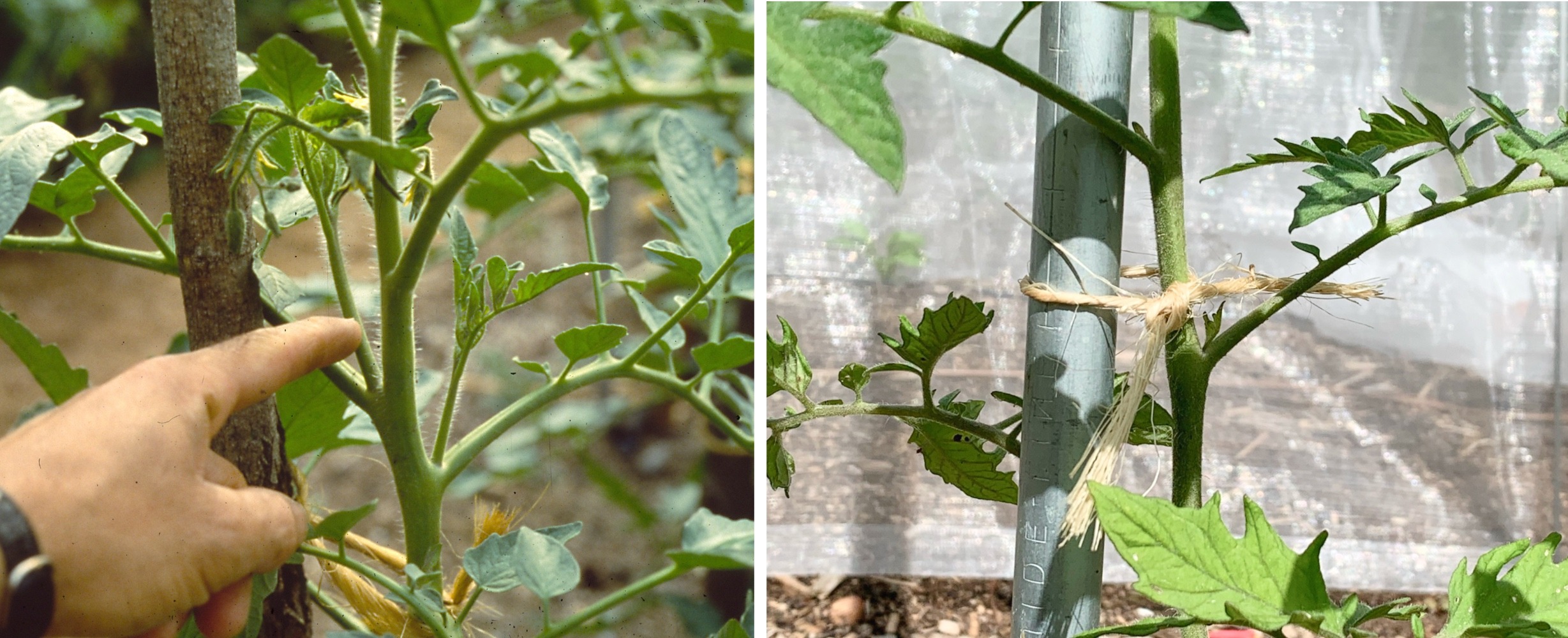
I wouldn’t say I’m stepping outside to “cultivate” my meadow because a meadow doesn’t involve the intimate care needed by a vegetable, a flower garden, or fruit trees or shrubs.
But “cultivate,” when it comes to gardening, is rife with meanings. I might mean I’m cultivating my garden soil, which could mean caring for it intimately, which I do by feeding it plenty of hay, straw, kitchen waste, compost, other organic (once living) materials, and, if needed, fertilizers.
Easy & Enjoyable
The subject of this blog post brings up yet another meaning of “cultivate” when it comes to soil: To stir it up with a rototiller, a shovel, or a garden fork.
I do stir up the ground in my garden — my vegetable gardens — but less dramatically, doing nothing more than tickling the surface to bring small weeds into submission. For this type of cultivation, I use a hoe; it’s easy, quick, and effective. With the popularity of mulching (another good method of “soil cultivation,” in the larger sense of soil care), hoeing is no longer as popular as it was decades ago.
Both hoeing and mulching do the job of controlling weeds but one or the other method usually has to be chosen because mulched ground can’t be hoed. I do, however, manage to do both in my vegetable beds because I mulch with compost which has broken down into small enough particles that allow hoeing.
The best time to hoe is on a sunny day with the soil just moist and weeds still small — or even not yet visible. Some weeds are there, but not yet visible because they aren’t yet peeking above ground. They’re fragile and easily done in with a hoe.
The problem with hoeing is that the hoe gardeners too often reach for is the traditional one whose blade is almost perpendicular to the handle. I use this one — but for mixing concrete, a job it does quite well. In the garden, it would have to be used with a chopping motion and is the hoe, no doubt that prompted C. W. Warner’s writing (in 1872) that for gardening “what a man needs is a cast-iron back, with a hinge in it.”
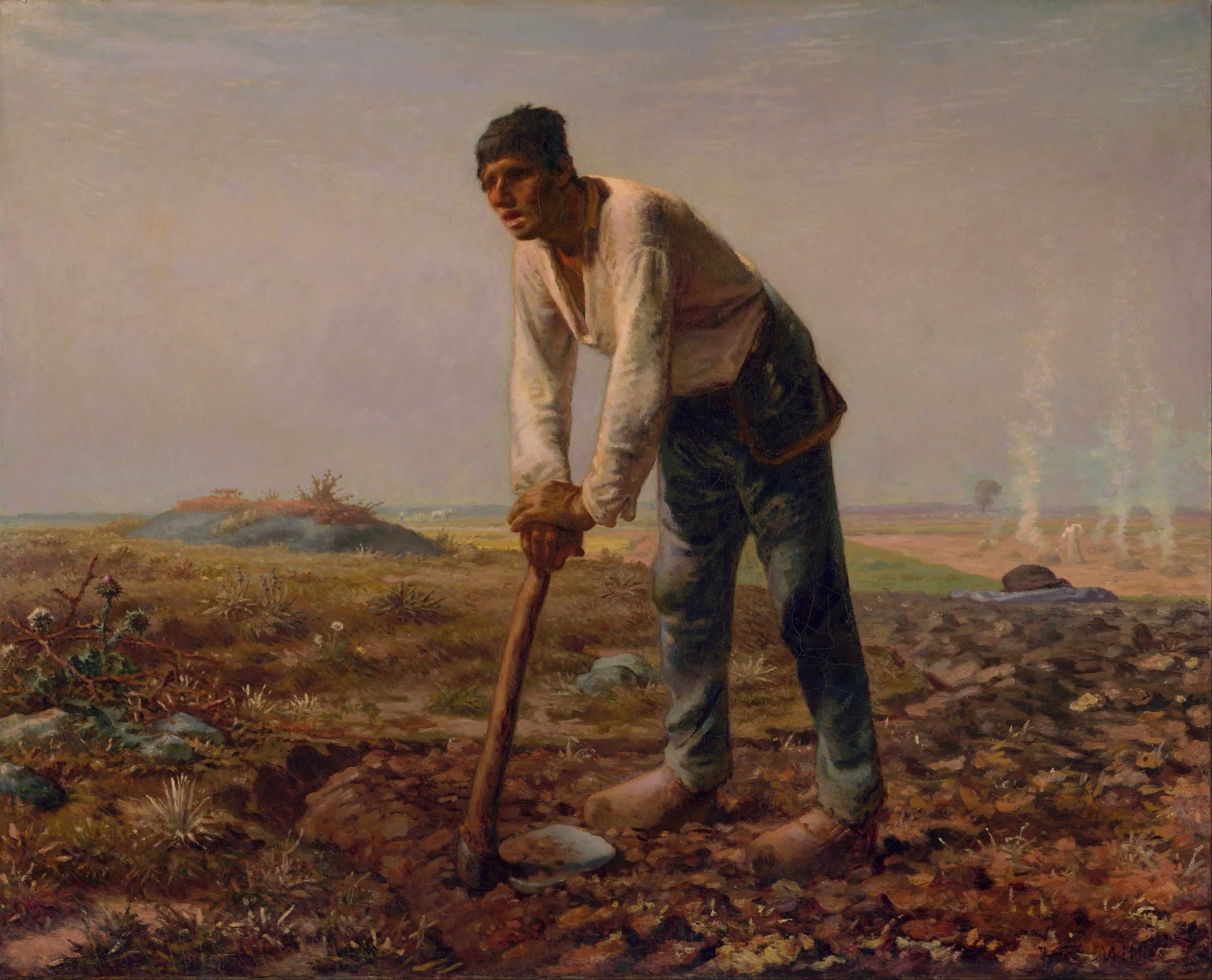
“Man with a Hoe” Millet (1860)
I Grow and Make my Own Hoes
The best hoe for stirring just that top 1/2 inch of ground is one with a thin blade that runs parallel to the ground’s surface as you hold the handle in a comfortable stance. A number of such hoes are on the market. Such hoes include the stirrup hoe, Eliot Coleman’s colinear hoe, the swan neck hoe, and the circle hoe.
All of the above hoes are good, but none are my favorite. Or favorites. Those are . . . drum roll . . . the wingèd weeder (pronounced as two syllables) and the wire weeder.
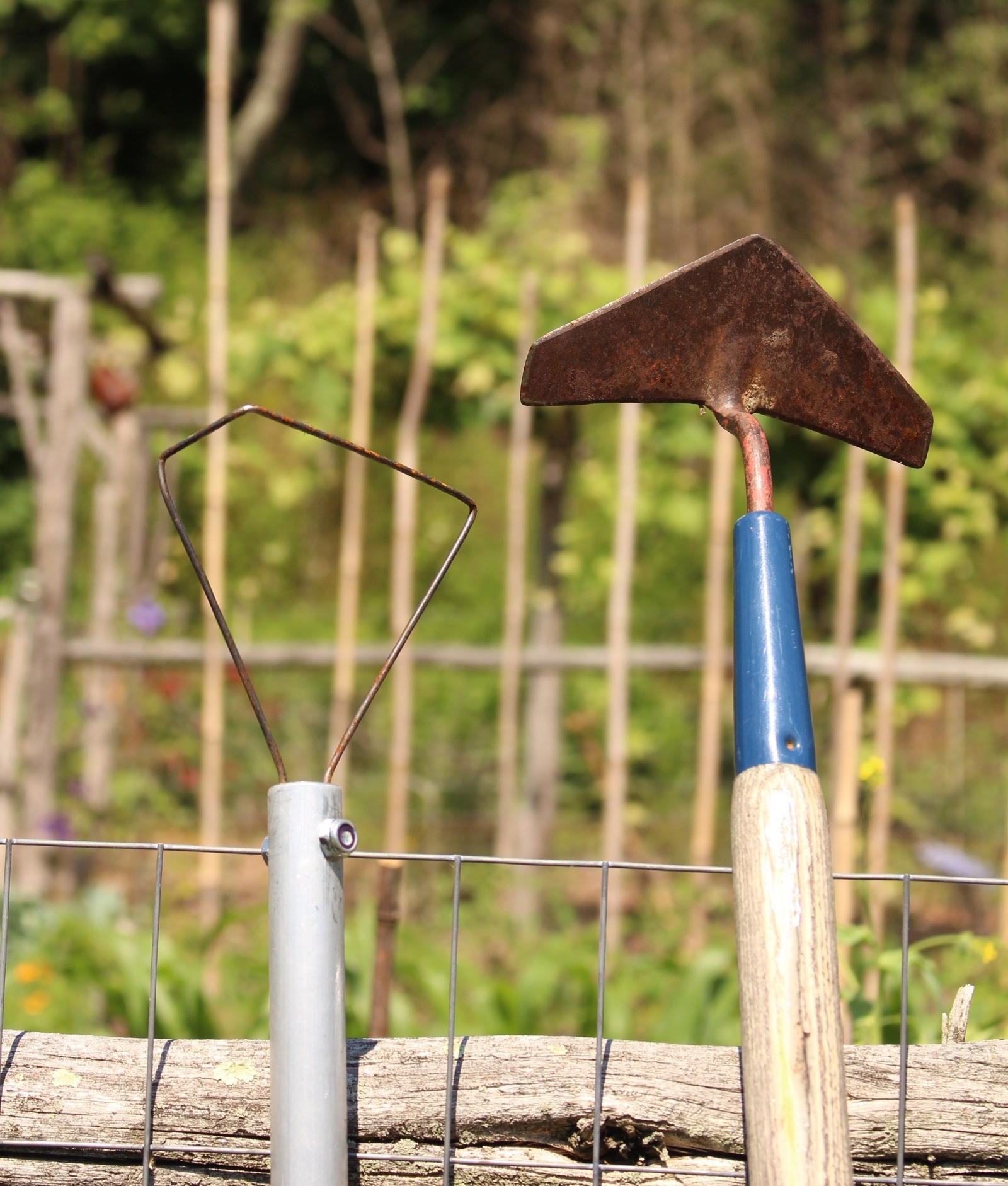
Wire weeder and winged weeder
Why two? The winged weeder is more useful of the two if weeds get slightly out of hand, that is, larger than just tiny seedling. The wire weeder is my hoe of choice when weeds are very, very small.
I bought the wingèd weeder at a farm sale decades ago and there’s no reason it shouldn’t last for decades more. The only upkeep I do is to sharpen the forward and rear facing parts of the wingèd blade occasionally and to oil the handle, ideally every year.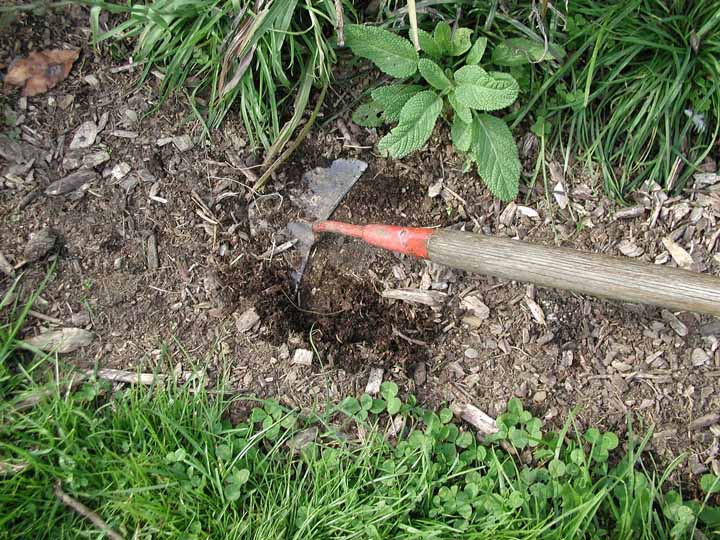
The wire weeder came from TwoBadCats.com and is all aluminum, which makes it very light and nimble. I just walk down a path, mostly just pulling the hoe in the space between plants in the adjacent bed as I walk.Wire weeder in action
A slight digression: Forty plus years ago, as a novice gardener, I went to visit Scott Nearing and work as a volunteer in his garden on the coast of Maine. His lifestyle and politics appealed to many young people of the day. The work was only in the morning, so after lunching with Scott and other visitors, I retired to my van for a nap.
That nap was shortened by a pounding on my window, into which a gray-haired but young adult was peering. He yelled out, “Do you want to help me?” “Sure,” I replied. We walked together at a fast pace to a jeep, loaded on some metal buckets, and drove down near the rocky beach. After filling the buckets with stones, lugging the buckets back to the jeep, we unloaded the contents onto shelves of his farm stand. Water, sprinkled on the rocks, would evaporate and cool vegetables placed there.
I spent the next couple of days working with that fellow, Eliot Coleman, who was soon to become an eminent organic farmer, proponent of organic farming, and writer of books on that topic. He generously answered my numerous questions and welcomed me into his cabin to skim his fine collection of gardening books. (I’ve since visited him about every ten years.)

Eliot and me, more recently
Back to hoeing: I’ll never forget one bit of general advice Eliot offered, and that was, if you need a tool and it doesn’t exist or isn’t available, make it!
I was thinking, last week, that I’d like to have more than one wire weeder. Then I could have weeding parties with me and two other weeders pleasantly walking down garden paths, each of us weeding adjacent beds. Two Bad Cats retired but their wire weeders are available from another company. The the shipping cost, was more than I was willing to pay so, of course, I decided to try to make two wire weeders.
The wire part is important; it’s spring steel. I made it from pieces of zigzag wire (used for holding greenhouse coverings to their frame), first straightened of its zigs and zags and then bent to match the bends of my wire weeder. The spring steel required slow bending with the help of a vise, pliers, and bending jig. 
With bends complete, each head needed a handle to match the light weight of the Two Bad Cats wire weeder. Bamboo, of which I have plenty! With a pipe clamp and two small holes in the bamboo into which short right angle bends of the wire head could fit, my wire weeder was ready for its maiden run.
The tool worked perfectly. Making it was both fun and satisfying.


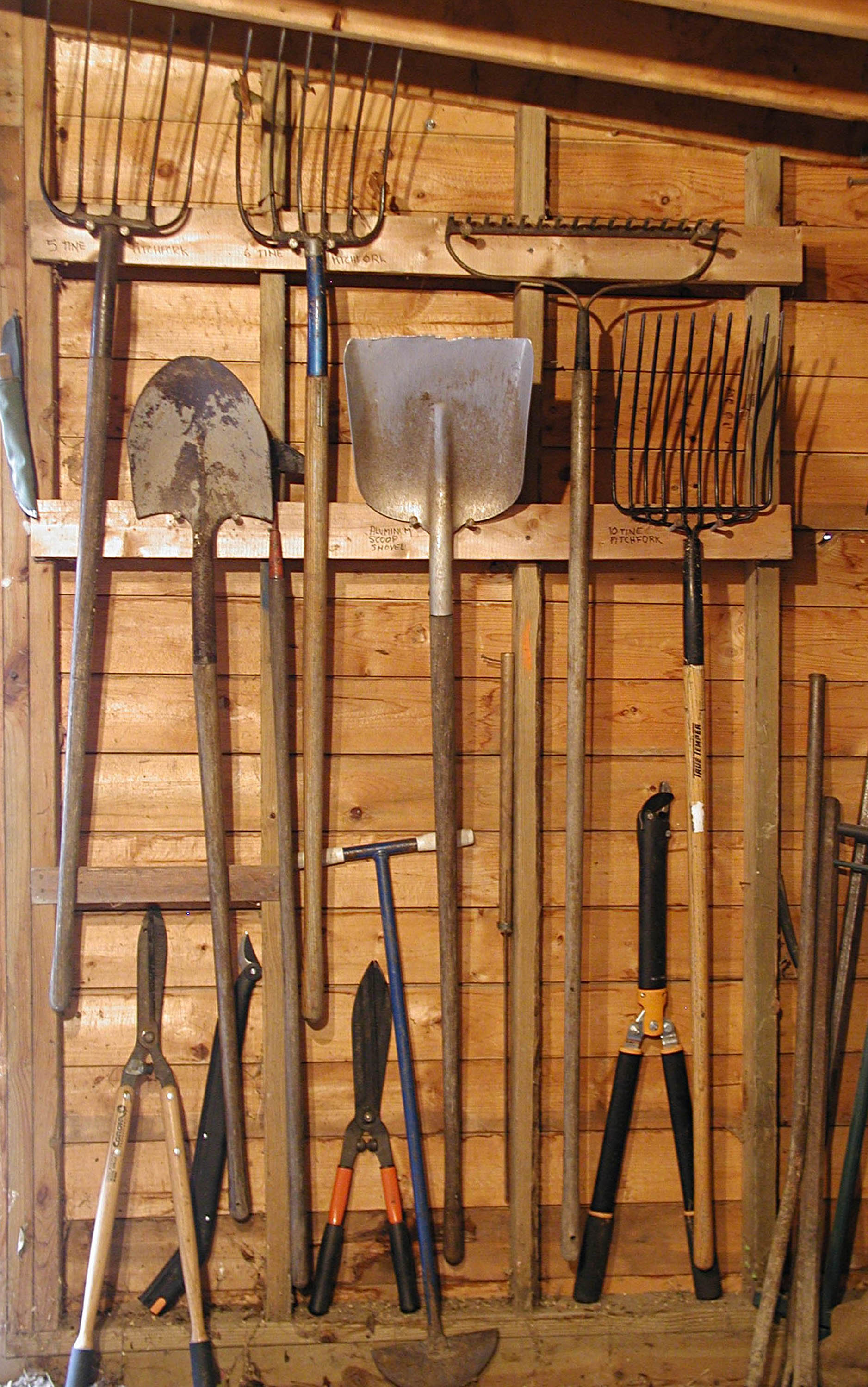
Few people realize that Scott Nearing was appalled by America’s racism In 1929, he wrote a book entitled “Black America,” a scathing indictment of thus UNitex States’s treatment of Black Americans. The Nearings were way ahead of their time connecting food production to issues of equality and justice. Unfortunately, many in the organic growing capitalist community are more than happy to divorce organic gardening from its ties to land equity and social justice. The Nearings would be appalled. All food is political.
I realized when I visited Scott 10 years after my first visit that Scott was a good gardener, but more than that he was a thoughtful social and political thinker. By that second visit, I had 10 years of intensive gardening under my belt and three graduate degrees in agriculture. Scott was then in his 90s. I was the only visitor, and our conversation was mostly about social issues and perspectives. I felt very lucky to have spent those couple of hours with him.